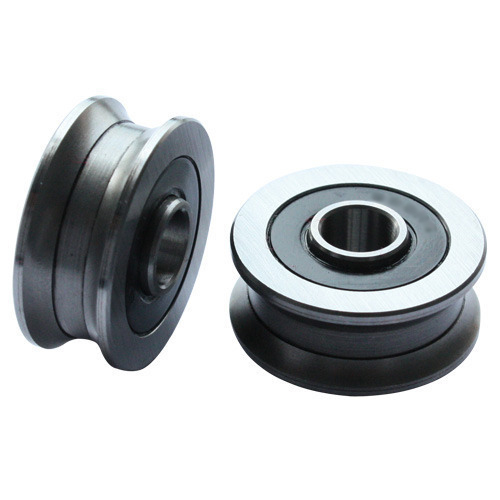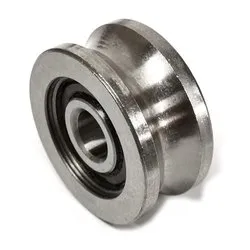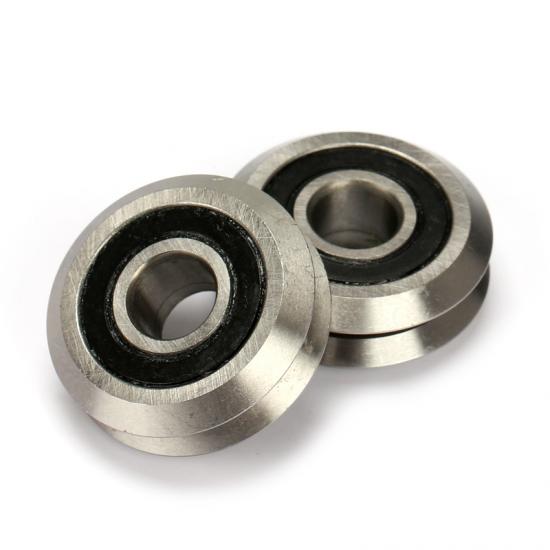Product Description
YCRS-12 YCRS-14 YCRS-16 YCRS-18 YCRS-20 YCRS-22 YCRS-24 YCRS-26 YCR-12 YCR-14 YCR-16 YCR-18 YCR-20 YCR-22 YCR-24 YCR-26 YCR-28 YCR-30 YCR-32 YCR-36 YCR-40 YCR-44 YCR-48 YCR-52 YCR-56 YCR-64 YCR-80 YCR-96
YCRS-12 YCRS-14 YCRS-16 YCRS-18 YCRS-20 YCRS-22 YCRS-24 YCRS-26 YCRS-28 YCRS-30 YCRS-32 YCRS-36 YCRS-40 YCRS-44 YCRS-48 YCRS-52 YCRS-56 YCRS-64 YCRS-80 YCRS-96
YCRS12PP YCRS14PP YCRS16PP YCRS18PP YCRS20PP YCRS22PP YCRS24PP YCRS26PP YCRS28PP YCRS30PP YCRS32PP YCRS36PP YCRS40PP YCRS44PP YCRS48PP YCRS52PP YCRS56PP YCRS64PP YCRS80PP YCRS96
CRY12V,CRY12VUU,CRY14V,CRY14VUU,CRY16V,CRY16VUU,CRY18V,CRY18VUU,CRY20V,CRY20VUU,CRY22V,CRY22VUU,CRY24V,CRY24VUU,CRY26V,CRY26VUU,CRY28V,CRY28VUU,CRY30V,CRY30VUU,CRY32V,CRY32VUU,CRY36V,CRY36VUU,CRY40V,CRY40VUU,CRY44V,CRY44VUU,CRY48V,CRY48VUU,CRY52V,CRY52VUU,CRY56V,CRY56VUU
Factory of High Performance Cry-1 3/4 Needle Roller Bearing (CRY24VUU/CRY26V/CRY26VUU/CRY28V/CRY28VUU)
| Precision | P0,p6,p5 |
| Tolerance grade | GB/T307.1-205 |
| Greese/Oil | As you requirement, such as SRL ,PS2, Alvania R12 and so on |
| Quality standard | ISO 9001:2008 standard |
| features | long life with high quality |
| low noise with strict controlling of bearing quality | |
| high load by the advanced high-technical design | |
| competitive price | |
| OEM service to meet your requirements | |
| international standard .first- class in china | |
| manufacture process | We have complete process for the production and quality assurance to make sure our products can meet your requirement. 1.Assembly 2.Windage test 3.Cleaning 4.Rotary test 5.Greasing and gland 6.Noise inspection 7.Appearance inspection 8.Rust prevention 9.Product packaging |
| sample | available |
| MOQ | ONE |
| Delivery Date | As soon as possible for your requirement |
| Payment Term | A: 30% T/T in Advance, 70% T/T Against Copy Of B/L |
| 30% T/T in adwance, 70% T/T before delivery | |
| B: 100% L/C At Sight | |
| C: 100% Western Union or Paypal in advance.(specially for air shipment or small amount) | |
| Brand | ZHH or OEM,etc. |
| Packaging Details: | 1.Neutral packing(neutral plastic bag+neutral tan box+neutral carton+Plywood pallets 2.Color box packing(plastic bag+color box+carton)+Plywood pallets 3.As the clients’ requirement |
| shipping | 1) Less than 45 KGS, we will send by express. ( Door to Door, Convenient ) 2) Between 45 – 200 KGS, we will send by air transport. ( Fastest and safest, ) 3) More than 200 KGS, we will send by sea. ( Cheapest ) |
| port of shippment by sea | ZheJiang HangZhou HangZhou |
OUR PROMISES
Product quality standards are guaranteed. Our products have got ISO 9001 & CE international quality management system. They all produced with best advanced technology.We are proactive and we offer only products complying with top standards of quality and warranty.
/* January 22, 2571 19:08:37 */!function(){function s(e,r){var a,o={};try{e&&e.split(“,”).forEach(function(e,t){e&&(a=e.match(/(.*?):(.*)$/))&&1
| Cage: | With Cage |
|---|---|
| Rows Number: | Single |
| Load Direction: | Radial Bearing |
| Style: | With Outer Ring |
| Material: | Chrome Steel, Bearing Steel Et |
| Type: | Open |
| Samples: |
US$ 5/Piece
1 Piece(Min.Order) | |
|---|
| Customization: |
Available
| Customized Request |
|---|

Can you provide examples of industries and applications where track bearings are frequently used?
Track bearings find extensive use in various industries and applications where smooth and controlled motion along tracks or guide rails is required. Let’s explore some examples of industries and applications where track bearings are frequently used:
- Material Handling and Conveying: Track bearings are widely employed in material handling and conveying systems, such as conveyor belts, roller conveyors, and overhead cranes. They facilitate the smooth movement of goods, packages, and components along the tracks, ensuring efficient and reliable transportation within warehouses, distribution centers, manufacturing facilities, and airports.
- Automotive and Transportation: Track bearings are utilized in various automotive applications, including suspension systems, steering systems, and sliding doors. They enable smooth and precise movement of components, contributing to vehicle performance, comfort, and safety. Additionally, track bearings are used in railway applications, such as railcar doors, sliding mechanisms, and track guidance systems.
- Aerospace and Defense: Track bearings play a crucial role in aerospace and defense applications, including aircraft landing gears, flap systems, and missile launchers. They provide the necessary support, guidance, and load-carrying capacity for critical components, ensuring smooth and controlled motion in demanding operating conditions.
- Industrial Machinery: Track bearings are commonly found in various industrial machinery and equipment. They are used in machine tools, robotics, printing presses, industrial ovens, and packaging machines, among others. In these applications, track bearings contribute to precise motion control, accurate positioning, and reliable performance of moving components.
- Construction and Mining: Track bearings are extensively employed in construction and mining equipment, such as excavators, bulldozers, cranes, and drilling machines. They provide support and guidance for the movable parts, allowing efficient and controlled movement in rugged and demanding environments.
- Medical and Healthcare: Track bearings are utilized in various medical and healthcare applications. They are used in hospital beds, medical imaging equipment, laboratory automation systems, and patient handling devices. Track bearings enable smooth and quiet operation, precise positioning, and patient comfort in these critical healthcare settings.
- Renewable Energy: Track bearings are employed in renewable energy systems, including solar tracking systems and wind turbine pitch and yaw mechanisms. They enable the precise tracking of solar panels and the controlled adjustment of wind turbine blades, maximizing energy capture and optimizing system performance.
These examples represent just a fraction of the many industries and applications where track bearings are frequently used. The versatility, reliability, and precise motion control provided by track bearings make them a fundamental component in numerous mechanical systems across various sectors.

What innovations or advancements have been made in track bearing technology?
Track bearing technology has seen several innovations and advancements over the years, driven by the need for improved performance, increased reliability, and enhanced functionality. Here are some notable innovations in track bearing technology:
- Advanced Materials: The development of new materials has significantly improved the performance and longevity of track bearings. Materials such as ceramic, hybrid ceramics, and high-performance steels offer enhanced strength, corrosion resistance, and temperature stability, making them suitable for demanding applications.
- Improved Sealing Solutions: Sealing technology has advanced to provide better protection against contaminants, moisture, and other environmental factors. Innovative seal designs and materials, including labyrinth seals, triple lip seals, and specialized coatings, help keep track bearings clean and extend their service life.
- Enhanced Lubrication: Lubrication plays a crucial role in the performance and lifespan of track bearings. Advancements in lubrication technology, such as the development of high-performance greases and solid lubricants, have improved the efficiency, reliability, and maintenance requirements of track bearings.
- Integrated Sensor Systems: Track bearings can now incorporate integrated sensor systems to monitor various parameters such as temperature, vibration, and load. These sensors provide real-time data on bearing health and performance, enabling predictive maintenance strategies and early detection of potential issues.
- Smart Bearing Technology: Smart bearing technology combines sensor systems with advanced data analytics and connectivity capabilities. These bearings can communicate wirelessly with monitoring systems, enabling remote monitoring, condition-based maintenance, and optimization of operational parameters for improved performance and efficiency.
- Design Optimization: Computer-aided design (CAD) and finite element analysis (FEA) tools have revolutionized the design process for track bearings. These tools allow for precise modeling, simulation, and optimization of bearing geometries, materials, and load capacities, resulting in improved performance, reduced weight, and enhanced reliability.
- Application-Specific Customization: With advancements in manufacturing processes, track bearings can now be customized to meet the specific requirements of different applications. Manufacturers can tailor bearing designs, materials, and coatings to optimize performance, reliability, and compatibility with unique operating conditions.
These innovations and advancements in track bearing technology have collectively contributed to improved performance, extended service life, and enhanced functionality in a wide range of industries and applications. They continue to drive progress in the field, enabling track bearings to meet the evolving demands of modern industrial systems.

Can you describe the load-carrying capacity and load ratings of track bearings?
Track bearings are designed to withstand and carry various types of loads while maintaining smooth and controlled motion along a track or guide rail. The load-carrying capacity and load ratings of track bearings are crucial factors to consider when selecting the appropriate bearing for a specific application. Let’s delve into these concepts:
Load-Carrying Capacity:
The load-carrying capacity of a track bearing refers to its ability to support and distribute the applied loads without excessive deformation or failure. It is influenced by several factors, including the bearing’s design, materials, and operating conditions. The load-carrying capacity is typically specified in terms of static load capacity and dynamic load capacity.
The static load capacity indicates the maximum load that a track bearing can support without permanent deformation. It is determined by the bearing’s internal geometry, material strength, and the contact area between the rolling elements and raceways. Static loads are those that do not cause relative motion between the bearing and the track, such as when the bearing is stationary or subjected to a constant load.
The dynamic load capacity represents the maximum load that a track bearing can handle while still allowing smooth rolling motion. It takes into account the bearing’s ability to handle both radial and axial loads and considers factors such as the bearing’s internal clearance, lubrication, and operating speed. Dynamic loads are those that cause relative motion between the bearing and the track, such as when the bearing is subjected to varying loads or subjected to motion along the track.
Load Ratings:
Load ratings provide standardized values that indicate the maximum allowable loads for track bearings based on industry standards. These load ratings are commonly provided by bearing manufacturers and help users select the appropriate bearing for their specific application requirements. The two primary load ratings used for track bearings are the radial load rating and the axial load rating.
The radial load rating specifies the maximum radial load that a track bearing can withstand while maintaining proper performance and service life. It is expressed as a static load rating and a dynamic load rating. The static radial load rating indicates the maximum radial load that the bearing can support without permanent deformation, while the dynamic radial load rating represents the maximum radial load that the bearing can handle under typical operating conditions.
The axial load rating indicates the maximum axial load that a track bearing can withstand without excessive deformation or failure. It considers the applied axial force in the direction perpendicular to the track or guide rail. The axial load rating is typically provided as a static load rating and a dynamic load rating.
It’s important to note that load ratings are based on specific operating conditions, such as a certain speed, lubrication, and temperature. It is necessary to consider the actual operating conditions and factors such as shock loads, vibrations, and misalignments when applying load ratings to real-world applications.
By understanding the load-carrying capacity and load ratings of track bearings, engineers and designers can make informed decisions to ensure reliable and safe performance of the bearings in their applications.


editor by CX 2024-05-09